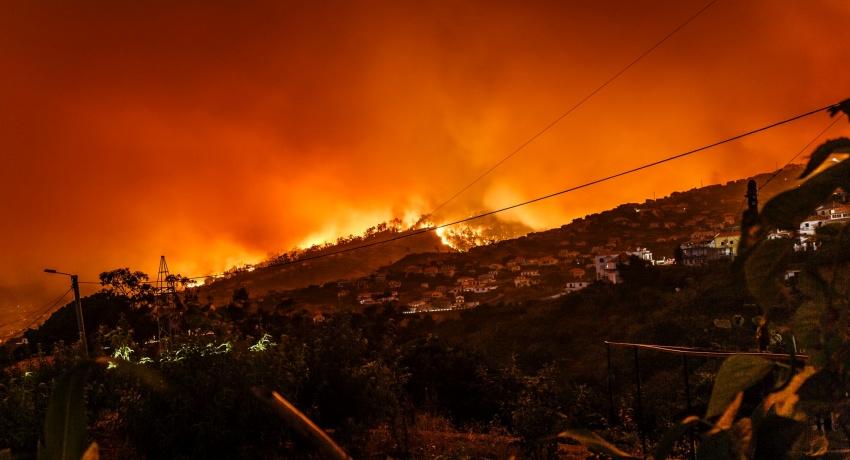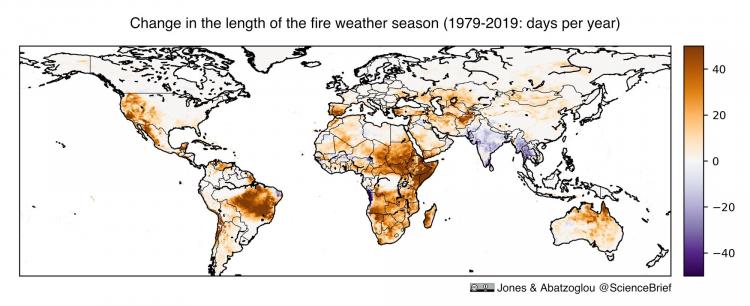An updated review published on ScienceBrief strengthens the evidence that human-induced warming increases the frequency and severity of fire weather, which leads to more extreme fire seasons.
From December 2019 and into 2020, fires burned in Australia like never before. Extreme heat and drought led to an unprecedented fire season in the forests of the southeast of the country, razing some 18 million hectares of land and affecting more than three billion animals. The catastrophe repeated some months later in the western United States. California wildfires destroyed 1.6 million hectares, doubling the previous record for the most land burned in a single year and spawning what has been considered the first ‘gigafire’ in modern history.
In both episodes, we found what scientists call fire weather, which refers to periods with a high likelihood of fire due to a combination of high temperatures, low humidity, low rainfall, and often high winds. Considering the severity of the last fire season both in Australia and California, which confirms the trends seen in recent years, an updated review published on ScienceBrief delves into a key question: is there a link between human-induced climate change and the increased risk of wildfires?
Over 50 new articles focused on wildfires reviewed
The ScienceBrief Review, which is supported by EU-funded projects 4C. CRESCENDO and VERIFY, strengthens the evidence that climate change increases the frequency and severity of fire weather. Following an earlier review in January 2020, the new update reviews scientific articles published since January 2020, focusing on those relevant to recent wildfires in the western US and Australia, as well as other new findings from around the world. The research collates now over 115 articles published between March 2013 and September 2020, showing “strong consensus” about the link between climate change and wildfire risk.
The new analysis highlights some key messages:
-
Human-induced warming, reflected in rising global temperatures and more frequent heatwaves, has brought a global increase in the frequency and severity of fire weather by promoting hot and dry conditions, leading to more extreme fires and more extreme fire seasons.
-
Land management is a contributing factor that can enhance or compound climate-driven changes in wildfire risk, either through fuel reductions or fuel accumulation, but alone cannot explain recent increases in wildfires. Likewise, fire suppression efforts are made more difficult by climate change and other factors, such as population growth at the wildland-urban interfaces.
-
Wildfires can have broad impacts on human health and wellbeing and for the natural environment, including deaths directly from fire and indirectly from associated air pollution, loss of property, accelerated thawing of permafrost, amplification of climate change, and biodiversity loss.
About the new ScienceBrief platform
The review has been published on ScienceBrief, a new web platform edited by scientists that shows the status of scientific consensus in critical areas such as climate change. The initiative was set up by researchers at the University of East Anglia’s Tyndall Centre for Climate Change Research and it is currently funded by the European Commission 4C and CRESCENDO projects.
Reference: 'Climate Change Increases the Risk of Wildfires' (ScienceBrief Review September 2020 update), Adam J P Smith, Matthew W Jones, John T Abatzoglou, Josep G Canadell, Richard A Betts (published at ScienceBrief.org on September 25 2020).
Picture: Michael Held (Unsplash)


